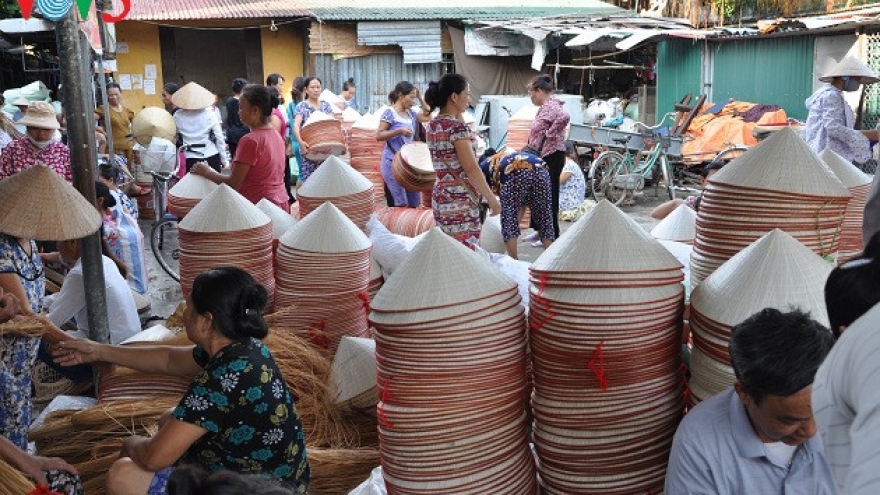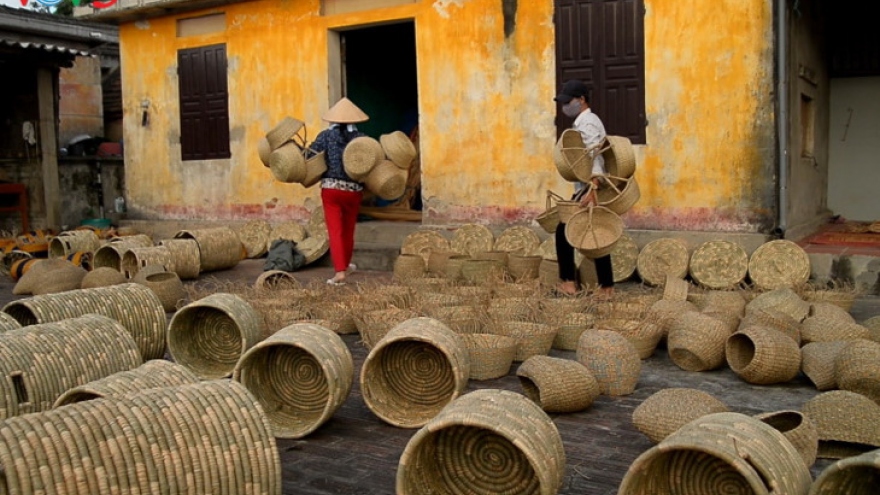Vietnamese craft villages to be promoted
VOV.VN - The “Quintessence of the Vietnamese craft village” project has been under way at Bat Trang village for a past year and will be completed late next year. It will be a place to introduce and promote the best of Vietnamese craft villages to domestic and foreign visitors.
 |
Bat Trang, a typical Vietnamese craft villages with 75 artisans, the most in Vietnam, exports its pottery and porcelain products to many countries.
The 4-million-USD Quintessence project covers an area of 3,300 square meters divided into specialized areas for pottery and porcelain, rattan, bamboo, and silk products, furniture, To He toy figurines, and other craft items.
Ha Thi Vinh, Deputy Chairwoman of the Vietnam Craft Village Association and Chairwoman of the Hanoi Handicraft and Craft Villages Association, said “The model will introduce products of outstanding Hanoi craft villages made by artisans who represent Vietnam’s 20 most typical craft villages.
It will be a place for craft villages to share experience under the "One Commune One Product" program and for visitors to explore Vietnamese culture through its fine arts and handicraft sector. The center will draw tourists to Bat Trang village, where local artisans will tell them stories about their craft.”
Part of the project is a camp where artisans, artists, and students from the University of Industrial Fine Arts can exercise their creativity. The project can be thought of as a museum of craft villages.
 |
It will be a venue for gathering and preserving the quintessence and creativity of our ancestors. These traditional products are for us and for future generations.”
Hanoi has the most traditional craft villages and artisans in Vietnam. When the project is completed, regular performances and competitions will be organized there for artisans to demonstrate their skills.
Dam Tien Thang, Deputy Director of Hanoi Industry and Trade Department, said “Any craft village which wants to grow must have artisans. Machines can never completely replace humans. The artisan is the soul of a craft village, its mainstay, and the driving force for its development.”
Following the “Quintessence of the Vietnamese craft village” project in Bat Trang, the Vietnam Craft Village Association plans to build similar projects in other Hanoi villages. First, Van Phuc silk village in Hanoi’s Ha Dong district, and then throughout Vietnam.


